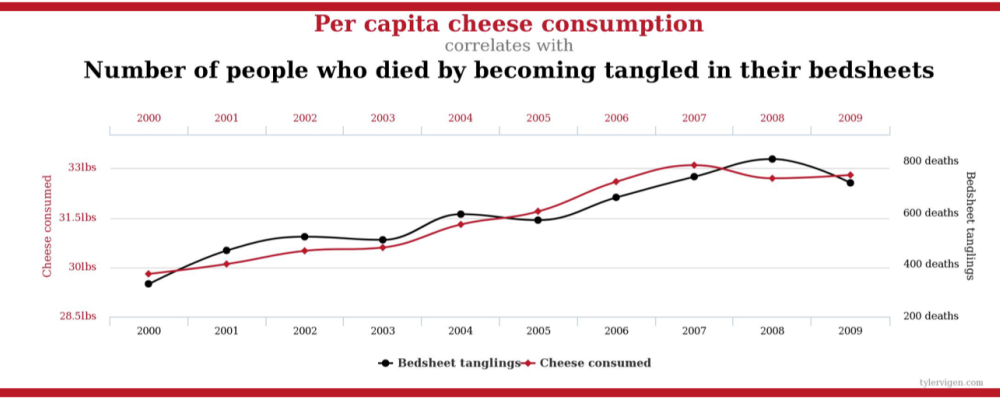There are numerous bloggers out there who write about science in general (some of them you can find in our collection of links). One particular blog is run at Karolinska Institutet in Stockholm, Sweden, and has a similar focus on research in life sciences and the life of PhD students or young investigators as the ImmunoSensation Blog. The following article by Ayla de Paepe on science communication was originally published on the Karolinska Institutet Career Blog on September 27th and gives you an idea of the topics you can find there. Enjoy! 🙂
Welcome to the dark side.
Wait, what?!
In my opinion, there’s a significant dark side to what’s supposed to be science communication. Sit back, relax and let me take you through some musings on the issue.
The first thing I want to bring up is the idea that “correlation is not causation”. It can be a possibility for mistakes in honest research, but it can also be misused to feed the audience whatever fear one wants to install in them. Take, for example, the amazing correlations Tyler Vigen put together on his website (also featured in the header image of this post). I can bet your spider sense will be going crazy with conspiracy theory vibes! Now, he did this to make people think about statistics, but you can see how easily this can be misused to serve, say, a political purpose.

(from Tyler Vigen’s crazy correlations)
Another one is questioning the validity of experts and actual research. This can be done with correlations like mentioned before, but also by playing to the divide between “experts” and “everyone else”. We’ve probably all heard things like “We don’t care what the numbers say, the people feel unsafe and that’s the only thing that counts”. Well, maybe the numbers are there to make sure we see the bigger picture, and maybe we should base our feelings on those instead of fear mongering? Just a thought.
Which brings us to another issue: if you only have a few stories, you can’t generalize. Say your neighbor and your wife got cut off in traffic this morning, this doesn’t mean that there’s a sudden epidemic of rude drivers, at least not since yesterday. Still, anecdotes are used all the time to illustrate bigger stories. It’s done in benevolent humanitarian settings, where organizations trying to raise money for a good cause use touching, personal stories of affected individuals. In these cases, the problems are usually much bigger than these individuals and very real, but we need an appeal to our humanity before we are willing to help. On the darker side, the same techniques can be used when there actually isn’t any bigger problem. For example, when the numbers show there really is no rise of violent crime, one could still highlight a few individual incidents to fit an agenda. And if anyone brings up the numbers, one can always turn to conspiracy theories, or claim that the scientific community doesn’t agree amongst themselves, like is done with climate change. Newsflash, if 97% of scientists agree, there is a consensus. (Want a review?)
This highlights another point troubling the communication between scientist and the general public. Scientist will rarely claim something is “the absolute truth” but rather that “it seems to be this or that”. Also, in good science, previous conclusions can always be proven wrong. This is progress, not weakness. But we need to be careful. If nothing is communicated at all, we just sit in our ivory tower. If suggestions and recommendations are swung around carelessly, there is no value in them, and they can hardly be distinguished from pseudo-science.
What about home-made science like the crazy correlations graphs of Tyler Vigen? Or the bold and depressing statements Worst-Online-Dater (no kidding, that’s what the author of the blog post called himself) makes about tinder, albeit on a small data set (in other words: anecdotes)? Both are entertaining and go around on social media, so they are successful in capturing an audience. But how do we communicate the shortcomings of small data sets and correlation/causation? Should every piece of science communication come with disclaimers? Do we as scientist have the duty to make sure any outside-of-academia science is held to the same standards as what we would send for publication in a peer reviewed journal? Let us know in the comments below!
🙂
featured image from colourbox.com
Ayla de Paepe
